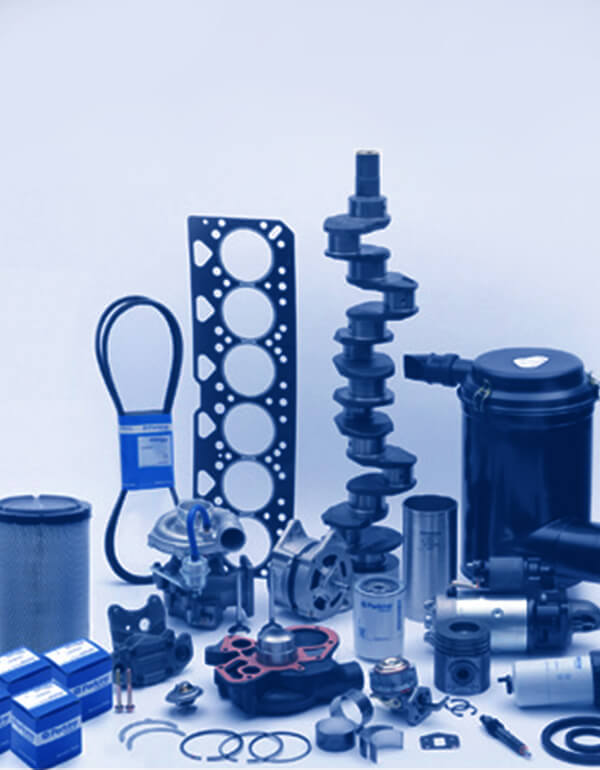

Scheduled oil sampling (SOS) is a proactive equipment management service tool that acts as a health barometer for the customer’s machines, recording critical oil analysis information, such as ingress of dirt, abnormal wear, fluid contamination and incorrect operator techniques or habits. SOS service is fundamental to effective equipment management where the company monitors machine component condition and drastically reduces the incidence of unplanned down time and the cost of catastrophic failures.
Production benefits of maximizing machine uptime through planned interventions. It is significant to note that an after-failure component repair can cost as much as 60% more than a planned before-failure repair. This simple fact endorses the use of SOS.” The SOS service is often offered to the customer as part of a customer support agreement, where all services are carried out by the OEM but is also offered as a stand-alone option for those customers who have their own maintenance capability.
The standard procedure is to test engine oil after every 500 hours of operation.
“Samples must be drawn correctly using standard containers for collecting samples from the Engines. The secret to its success lies in the interpretation of the laboratory results by trained personnel and subsequent recommendations. Trending of samples is also critical to help predict and recommend actions.
While there are other oil analysis facilities that can carry out and produce such test results, ‘None have direct access to the latest wear parameters and recommendations only given to certified -endorsed laboratories,
Oil-cleanliness analysis uses a particle-count test for non-engine oil. It detects both metallic and non-metallic debris, such as friction-disc material generated by wear, as well as dirt from external sources. Together with the wear-rate analysis, this allows for comprehensive evaluation of the hydraulic and power-train systems.
Oil-condition analysis determines degradation of the oil’s lubricating properties. An infrared analysis instrument is used to compare the properties of new oil with that of the used-oil sample. This not only reveals the extent to which the oil has deteriorated during use, but also verifies that the oil is performing according to specification during the entire oil-change period.
Finally, traces of fuel, water or glycol are indications of problems that require immediate correction for optimal performance and component durability. Fuel dilution reduces the oil’s viscosity and destroys its lubricating properties. Glycol or coolant contamination causes rapid oil oxidation, leading to major engine failure if not resolved promptly. Water can contaminate an oil system by leaking in from the outside, or by condensing within a hot-oil compartment or crankcase. Water will cause the oil to form a sludge that can plug filters. Proper fluid maintenance is imperative to keep machines and engines operating at peak performance.
The samples provided are analysed and on several inspection and analysis provide a trend data of machine parts and areas of probable failures. The data analysed in the SOS LAB are recorded with high accuracy and the results are then transmitted to the customer electronically so as to facilitate real-time corrective action.
“Access to this data is critical, as accurate predictions are essential to eliminate unnecessary down time,” Our advantage lies in the recommendations. we can give to the customer, as we know exactly how a specific component should be performing by being able to access the global database.
This vast resource underpins every single one of our recommendations,” The Accurate data translates into a documented service history that will enhance the trade-in or resale value of a particular machine.
The SOS service offered by GMMCO POWER for Perkins Engines is designed to identify problems before they translate into major unplanned repairs. Early detection is the key to reducing down time and increasing productivity, as well as boosting component durability.
GMMCO POWER has within their flagship the facility to provide this analysis and have developed the SOS analysis tests not only to evaluate the condition of a specific component, but more importantly to draw the relationship between it and the machine into which it is fitted. This allows for a holistic overview, the tests include wear-rate analysis, which detects, identifies and assesses the quantity and type of wear-metal elements in the oil. The presence of silicon and other elements indicating the ingress of dirt are also monitored.
Compared to the Capital investment made by you the SOS charges are negligible!!
As service to the industry we provide a sampling Kit which is sterilized and is given to the customer. The charge to carry out an analysis is a fixed charge of INR# xxxxxx per sample.This includes supply of containers for collection of oil sample, detailed analysis report within 48 hours of receipt of sample at the laboratory and also recommendations of the analysis.
A history of analysis on subsequent analysis is also provided if the customer maintains record.